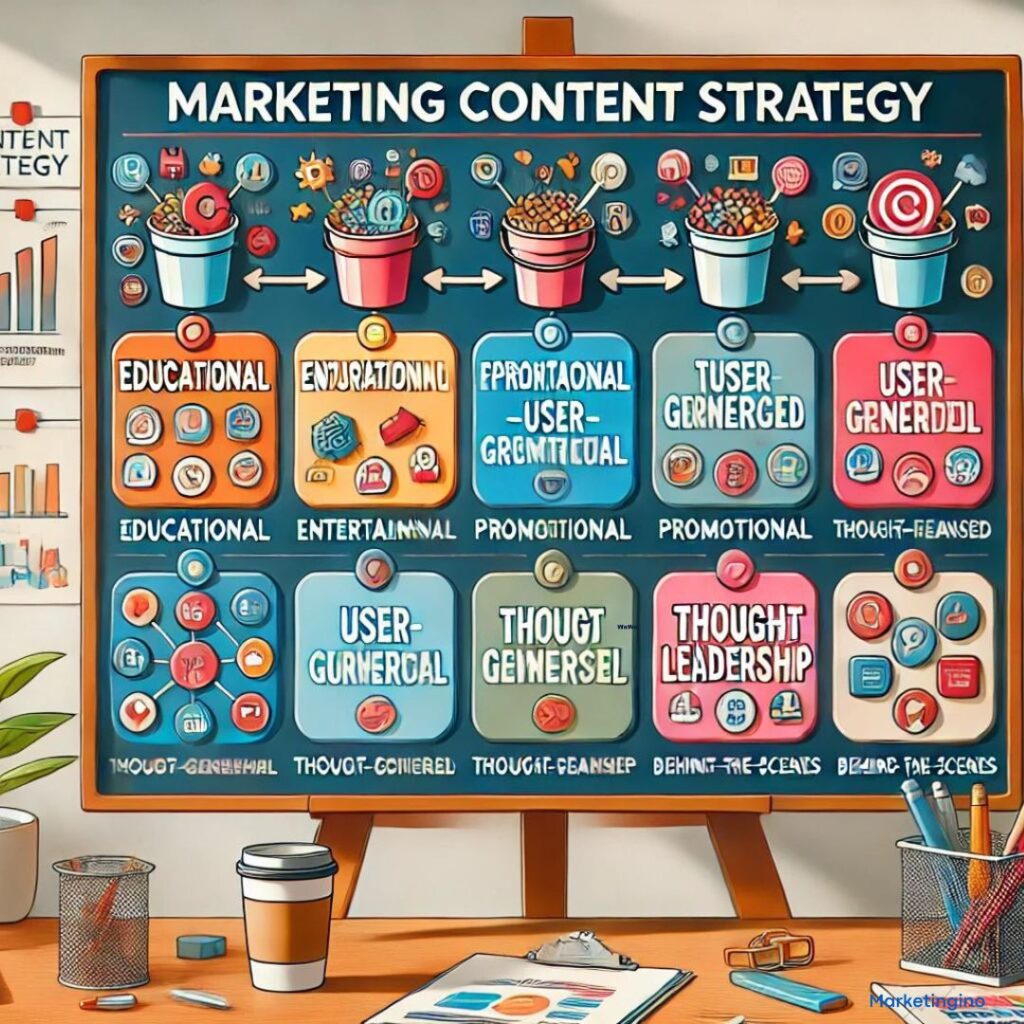In the world of digital marketing, creating and distributing content that resonates with your audience is crucial. To achieve this, marketers often use a strategy called content bucketing. Content buckets are categories used to group different types of marketing content, making it easier to plan, organize, and execute a cohesive content strategy. This article explores the concept of content buckets, their importance, and how to effectively implement them in your marketing efforts.
What are Content Buckets?
Content buckets are broad categories or themes into which you can organize your marketing content. Each bucket represents a specific area of interest or a type of content that aligns with your brand’s objectives and audience’s needs. By categorizing content into buckets, marketers can ensure a balanced mix of content types and topics, keeping their audience engaged and informed.
The Importance of Content Buckets
- Organization: Content buckets help streamline the content creation process by providing a clear structure. This organization makes it easier to manage and plan content over time.
- Consistency: By grouping content into buckets, you can maintain a consistent flow of diverse content types, ensuring your audience remains engaged with fresh and varied material.
- Targeting: Content buckets allow you to target specific audience segments more effectively. Each bucket can be tailored to address the interests and pain points of different groups within your audience.
- Strategic Planning: Bucketing content helps in strategic planning and ensures that all key topics and themes relevant to your brand and audience are covered.
Common Types of Content Buckets
While content buckets can vary depending on the brand and industry, some common types include:
- Educational Content: Articles, tutorials, how-to guides, and webinars that provide valuable information and insights.
- Entertaining Content: Videos, memes, and fun quizzes that entertain and engage your audience.
- Promotional Content: Announcements, product launches, and sales offers that directly promote your products or services.
- User-Generated Content: Testimonials, reviews, and content created by your audience, showcasing their experiences with your brand.
- Thought Leadership: Blog posts, whitepapers, and opinion pieces that establish your brand as an authority in your industry.
- Behind-the-Scenes Content: Insights into your company culture, team, and operations, humanizing your brand and building trust.
Best Practices for Implementing Content Buckets
- Define Your Buckets Clearly: Identify the key themes and topics relevant to your audience and business goals. Ensure each bucket serves a distinct purpose.
- Plan a Content Calendar: Use a content calendar to schedule and distribute content from each bucket consistently. This ensures a balanced mix of content types.
- Analyze and Adjust: Regularly review the performance of your content buckets. Analyze engagement metrics and adjust your strategy to focus on the most effective content types.
- Collaborate with Your Team: Involve your team in brainstorming and creating content for each bucket. Diverse perspectives can lead to more creative and engaging content.
The Impact of Effective Content Bucketing
Implementing content buckets effectively can have a significant impact on your marketing strategy:
- Enhanced Audience Engagement: By providing a variety of content types, you keep your audience engaged and coming back for more.
- Improved Content Management: A structured approach to content creation and distribution makes managing and scaling your content efforts more manageable.
- Greater Marketing ROI: Targeted and well-organized content buckets can lead to higher engagement, conversions, and ultimately a better return on investment.
In conclusion, content buckets are a powerful tool for organizing and executing a successful content marketing strategy. By categorizing content into distinct themes and topics, marketers can ensure a consistent, engaging, and targeted approach to content creation. Whether you’re a seasoned marketer or just starting, implementing content buckets can help you streamline your efforts and achieve your marketing goals more effectively.


